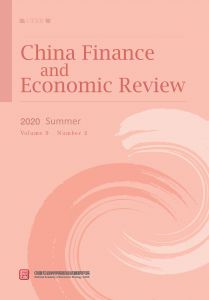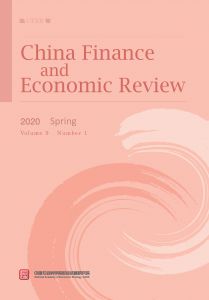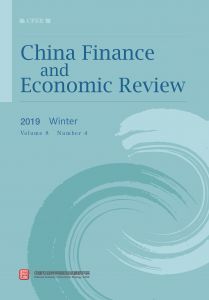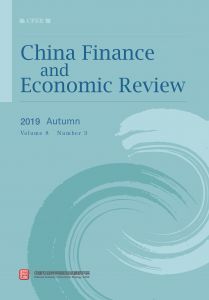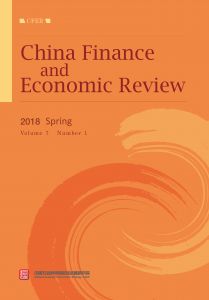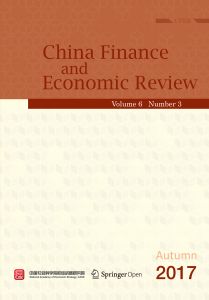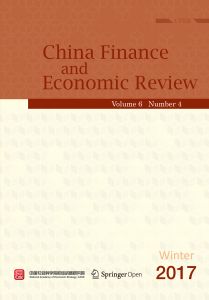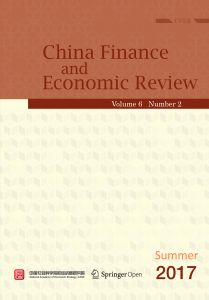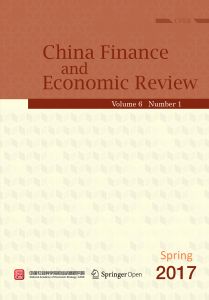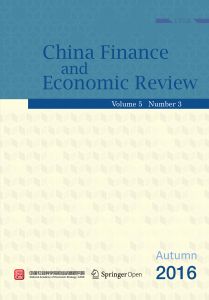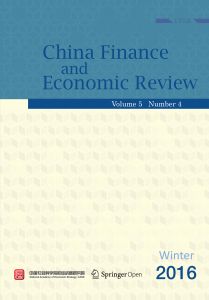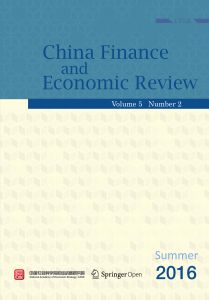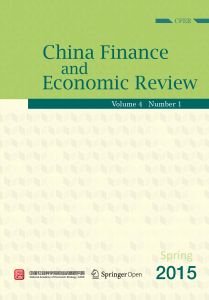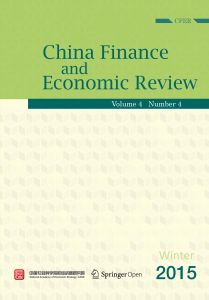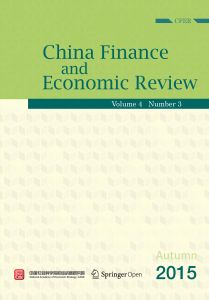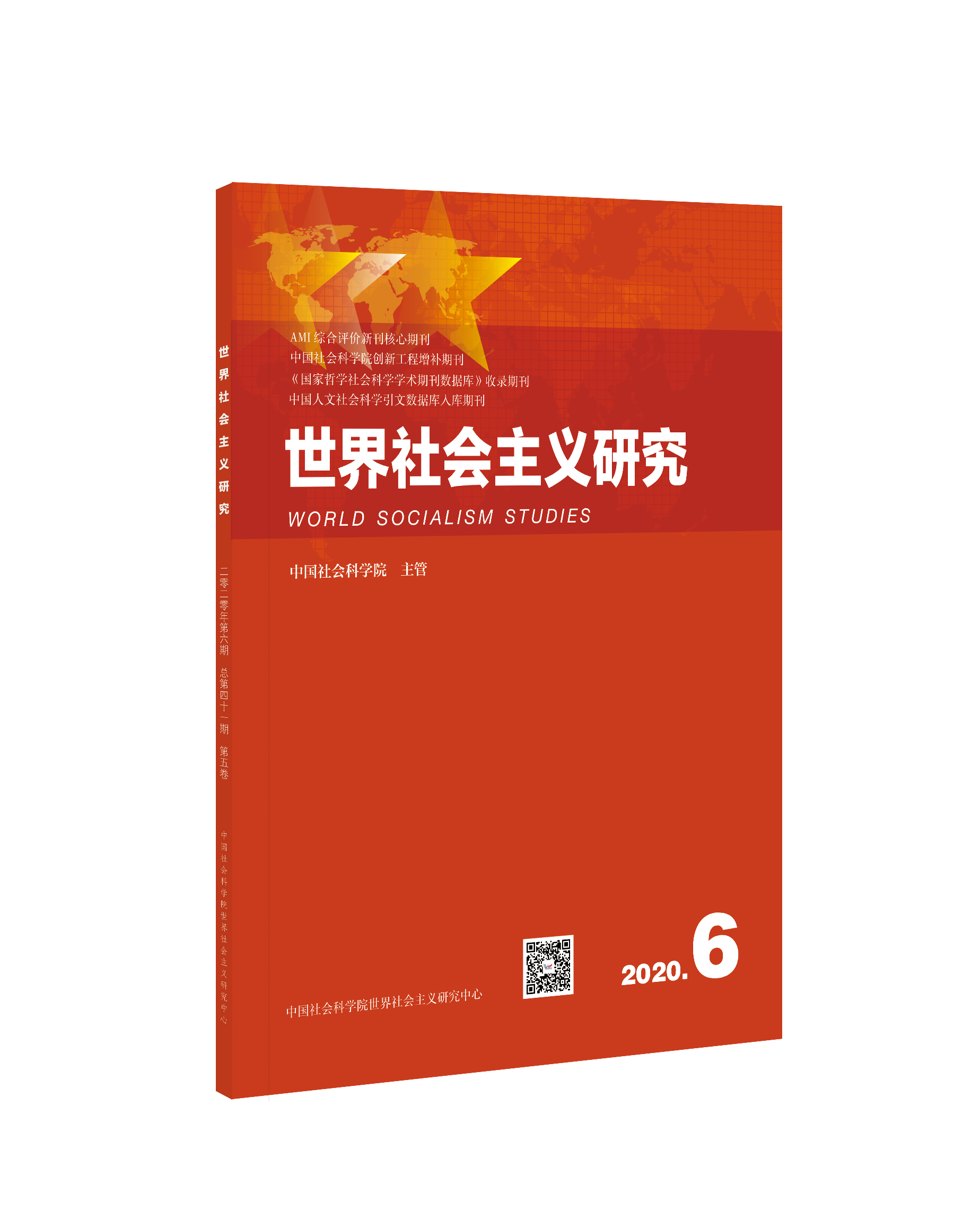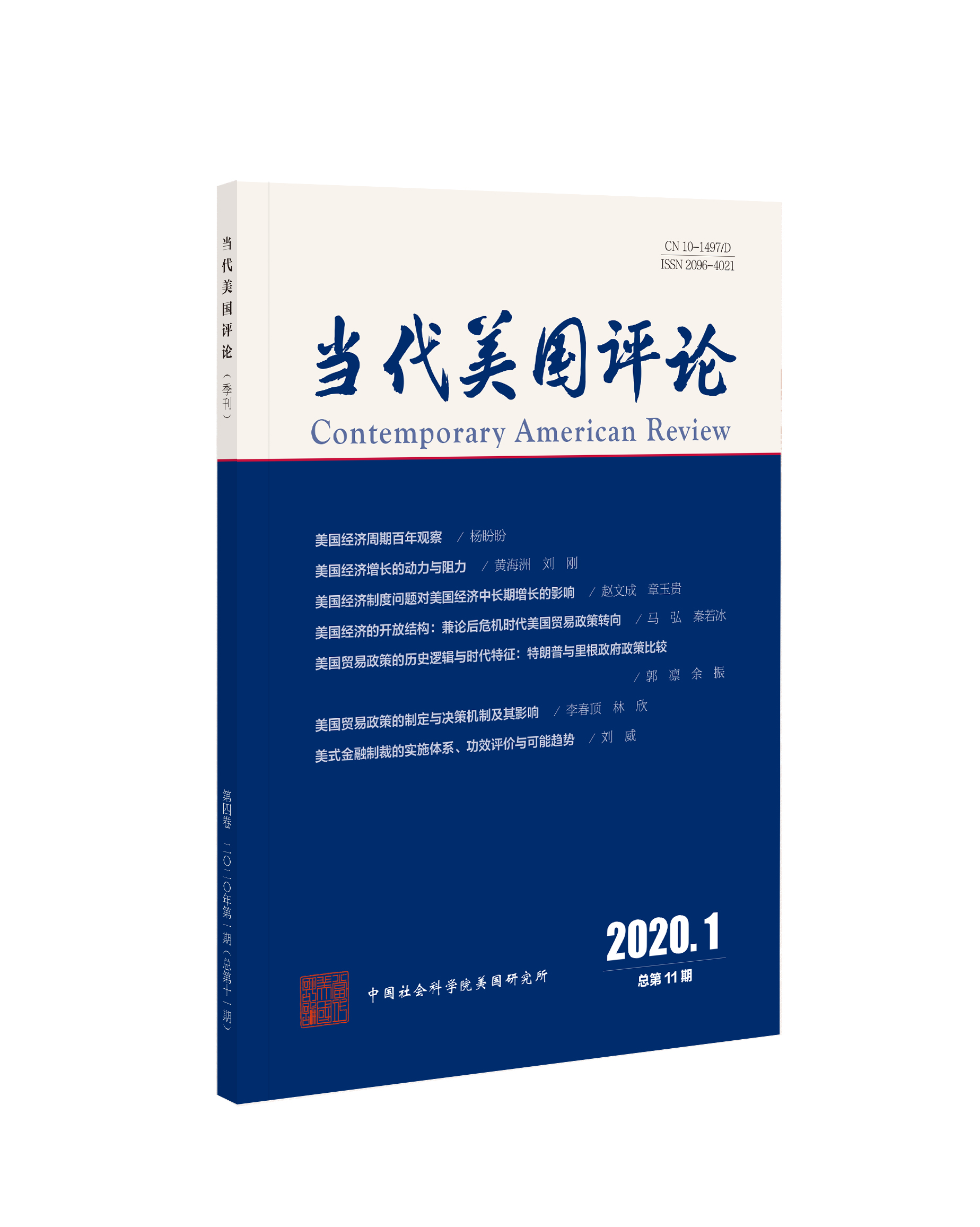最新期刊
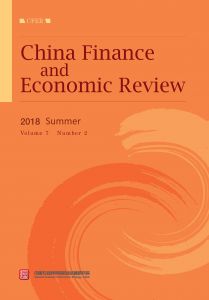
目录
过往期刊
参考文献
-
Instructions for Authors
-
编委会
-
Does the Medium-Term Expenditure Framework Work for the Constraint of Debt Scale?
-
1. Introduction
-
2. Theoretical Basis and Hypothesis
-
3. Research Design and Data Description
-
4. Empirical Results and Analysis
-
5. Conclusions and Suggestions
-
-
The Problems and Countermeasures of China’s Consumption Development
-
1. The Situation and Characteristics of Consumption in China
-
2. Constraints in the Process of Consumption Upgrade
-
3. Policies and Suggestions on Upgrading Consumption
-
-
Infrastructure Finance under the Framework of the Belt and Road Initiative (BRI)
-
1. Introduction
-
2. Demand for Infrastructure Investment of the Countries along the Belt and Road
-
3. Main Sources of Funds for Infrastructure Projects of the BRI
-
4. Special Challenges of Infrastructure Investment of the BRI
-
5. Conclusion
-
-
Index Construction and Features of China’s Fiscal Policy Uncertainty and Its Causes
-
1. Introduction
-
2. Theoretical Basis and Index Construction
-
3. Features of Fiscal Policy Uncertainty
-
4. Causes for Policy Uncertainty
-
5. Conclusions and Recommendations
-
-
Who Drives Environmental Governance of Enterprise: Official Tenure Evaluation or Five-Year Plan Target Assessment?
-
1. Introduction
-
2. Institutional Background, Literature Review and Hypothesis
-
3. Sample Selection and Research Design
-
4. Empirical Process and Result Analysis
-
5. Research Conclusions and Policy Implications
-
-
Does Urban and Rural Subsistence Security System Reduce Future Poverty? Empirical Analysis Based on Vulnerability to Poverty
-
1. Introduction
-
2. Calculation Method for the Vulnerability to Poverty
-
3. Data Source and Variable Description
-
4. Subsistence Security Subsidy in Urban and Rural Areas and the Vulnerability to Poverty
-
5. Mechanism Analysis
-
6. Conclusions and Policy Suggestions
-
-
The Effects of Financial Structure on Urban-Rural Income Gap Viewed through Economic Growth and Urbanization
-
1. Introduction
-
2. Mechanism Analysis and Research Hypothesis
-
3. Model Setting, Index Selection and Typical Facts
-
4. Empirical Analysis
-
5. Conclusions
-
按年份浏览:
- 全部
- 2020
- 2019
- 2018
- 2017
- 2016
- 2015
- 2014
- 2013
[1][1]Acemoglu, D. (2005). Constitutions, Politics, and Economics: A Review Essay on Persson and Tabellini’s the Economic Effects of Constitutions. Journal of Economic Literature , 43(4), 1025-1048.
[2][2]Ba, S. S., Wang, J. S., & Li, Q. (2011). Examine Local Governments’ Debt and Financing Model from the Perspective of Urbanization. China Finance (Zhongguo Jinrong ), 19, 20-22.
[3][3]Bai, J. M., & Shi, Y. H. (2015). Accelerating the Construction of Cross-Annual Budget Balance Mechanism in Accordance With Law. China State Finance (Zhongguo Caizheng ), 1, 50-53.
[4][4]Bai, Y. F., & Ye, F. (2013). Mid-Term Budget: China’s Mode and International Experiences. Review of Economy and Management (Jingji Yu Guanli Pinglun ), 1, 76-85.
[5][5]Bai, Y. F., & Zhang, J. (2011). Mid-Term Expenditure: Concept, Conditions and Stages, Sub National Fiscal Research (Difang Caizheng Yanjiu ), 12, 37-41. Castro, I., & Dorotinsky, W. (2008). Medium-Term Expenditure Frameworks: Demystifying and Unbundling the Concepts. The World Bank. Elizabeth, M. (1997). Mozambique: Assistance with the Development of a Medium Term Expenditure Framework. Consulting Africa (draft report ), 11.
[6][6]Gao, P. Y. (2016). Lectures of China’s Economics Forum for 50 People on the Annual Meeting in 2016. (Zhongwen)
[7][7]Gleich, H. (2003). Budget Institutions and Fiscal Performance in Central and Eastern European Countries. European Central Bank Research Paper, No.215.
[8][8]Grigoli, F., Mills, Z., Verhoeven, M., & Vlaicu, R. (2012). MTEFs and Fiscal Performance: Panel Data Evidence, Working Paper. Hardin, G. (1968). The tragedy of the Commons. Science , 162 (3859), 1243-1248.
[9][9]Hebei Provincial Government. (2008). Implementation Opinion on Boosting the Establishment of Three-Year Rolling Budget on Development Expenditure in Provincial Departments. Hebei Provincial Government’s Website, November 13.
[10][10]Huang, C. Y., & Mao, J. (2015). Fiscal Condition and Local Debt Scale: New Findings Based on the Perspective of Transfer Payments. Finance and Trade Economics (Caimao Jingji ), 6, 18-31.
[11][11]International Monetary Fund. (2007). Manual on Fiscal Transparency . International Monetary Fund.
[12][12]Jia, K., & Bai, J. M. (2002). Overcome Fiscal Difficulties in Counties as well as Towns and Innovate Fiscal System. Economic Research Journal (Jingji YanJiu ), 2, 3-9.
[13][13]Ljungman, G. (2007). The Medium-Term Fiscal Framework in Sweden. OECD Journal on Budgeting , 6 (6), 1-17.
[14][14]Ma, J., Hou, Y. L., & Lin, S. L. (2007). National Governance and Public Budget . Beijing: China Financial & Economic Publish House. (Zhongwen)
[15][15]Mikesell, J. L. (2002). Tax Expenditure Budgets, Budget Policy, and Tax Policy: Confusion in the States. Public Budgeting and Finance , 22 (4), 34-51.
[16][16]Sun, L., & Chen, S. M. (2015). Debt Risk, Fiscal Transparency, and Accrual Basis Selection—Based on Data Analysis of International Experiences. Management World (Guanli Shijie ), 10, 132-143.
[17][17]The Budget Bureau of the Ministry of Finance. (2011). Enhance Budget Performance Management, Improve Finance Resources Efficiency. China State Finance (Zhongguo Caizheng ), 5, 16-19.
[18][18]The Ministry of Finance. (2015). State Council’s Report on Standardizing Local Governments’ Debt Management. Website of the National People’s Congress of China, December 12.
[19][19]The World Bank (2013). Beyond the Annual Budget: Global Experience with Medium Term Expenditure Frameworks . Beijing: China Financial & Economic Publishing House. (Zhongwen)
[20][20]Uctum, M., & Wickens, M. (2000). Debt and Deficit Ceilings and sustainability of Fiscal Policies: An Intertemporal Analysis. Oxford Bulletin of Economics and Statistics , 62 (2), 197-222.
[21][21]Wang, Y. J. (2008). Budget Reform in China: The Strategy and Point of Introducing MTBF. Journal of Central University of Finance & Economics (Zhongyang Caijing Daxue Xuebao ), 9, 1-5.
[22][22]Wang, Y. J. (2011). China’s Public Budget Reform: From Annual to Mid-term Basis . Beijing: Economic Science Press. (Zhongwen)
[23][23]Wildavsky, A. (1986). Budgeting: A Comparative Theory of Budgetary Processes (Revised Edition ). New Jersey: Transaction Books, 317.
[24][24]Xiao, W. D. (2007). Annual Budget and Multi-Year Budget: Comparison and Suggestion. Journal of Central University of Finance & Economics (Zhongyang Caijing Daxue Xuebao ), 12, 7-11.
[25][25]Yang, Z. Y. (2009). Research on Supporting Conditions of Initiating Local Governments’ Debt. Sub National Fiscal Research (Difang Caizheng Yanjiu ), 4, 4-8.
[26][26]Ylaoutinen, S. (2004). Fiscal Frameworks in Central and Eastern European Countries. Finnish Ministry of Finance Discussion Paper 72.
[27][27]Zhang, J. W. (2001). Experience of Developed Countries’ Multi-Year Budget in Europe and the United States. Public Finance Research (Caizheng Yanjiu ), 10, 74-78.
[28][28]ADB. (2016). ADB Annual Report. https://www.adb.org/sites/default/files/institutionaldocument/237881/adb-annual-report-2016.pdf, accessed 12 November 2017.
[29][29]ADB. (2017). Meeting Asia’s Infrastructure Needs. https://www.adb.org/sites/default/ files/publication/227496/special-report-infrastructure-highlights.pdf, accessed 18 October 2017.
[30][30]Cassis, Y., De Luca, G., & Florio, M. (2016). Infrastructure Finance in Europe: Insights into the History of Water, Transport, and Telecommunications . Oxford Scholarship Online.
[31][31]CDB. (2016). China Development Bank Granting an Accumulative Total of Loans of $162.1 Billion for the Belt and Road Initiative. http://www.cdb.com.cn/xwzx/ mtjj/201609/t20160902_3623.html, accessed 5 December 2016.
[32][32]CEXIM. (2016). From Vision to Action—The Export-Import Bank of China Renders Support to the Belt and Road Initiative. http://www.eximbank.gov.cn/tm/Newlist/ index_343_29578.html, accessed 5 December 2016.
[33][33]Finnerty, J. D. (2013). Project Financing: Asset-Based Financial Engineering (Third edition ). New Jersey: John Wiley & Sons, Ltd.
[34][34]Massachusetts Special Commission on Infrastructure Finance. (1989). A Survey of Massachusetts Infrastructure Needs for the 1990s . Boston: Trainor and Company.
[35][35]PIDG. (2016). PIDG Annual Report. http://www.pidg.org/resource-library/annualreports, accessed 18 October 2017.
[36][36]PPIAF of the World Bank Group. (2016). The State of PPPs: Infrastructure Public-Private Partnerships in Emerging Markets & Developing Economies 1991-2015. https://ppiaf.org/documents/3551/download, accessed 18 October 2017.
[37][37]Stern School of Business and New York University. (2016). The Infrastructure Finance Challenge . http://www.jstor.org/stable/j.ctt1sq5v21.6, accessed 16 October 2017.
[38][38]Weber, B., Staub-Bisang, M., & Alfen, H. W. (2016). Infrastructure as an Asset Class: Investment Strategy, Project Finance and PPP (Second Edition ). New Jersey: John Wiley & Sons, Ltd.
[39][39]World Bank. (2016). PPI Investments in IDA Countries, 2011 to 2015. https://ppi.worldbank.org/~/media/GIAWB/PPI/Documents/Data-Notes/PPI-in-IDACountries-2011-2015.pdf, accessed 18 October 2017.
[40][40]World Bank. (2016). World Bank Annual Report. https://openknowledge.worldbank.org/ bitstream/handle/10986/24985/9781464808524.pdf, accessed 12 November 2017.
[41][41]Xi, J. P. (2017). Work Together to Build the Silk Road Economic Belt and The 21st Century Maritime Silk Road. Speech by President Xi Jinping at the Opening Ceremony of The Belt and Road Forum for International Cooperation on 14 May 2017, http://news.xinhuanet.com/english/2017-05/14/c_136282982.htm, accessed 10 November 2017.
[42][42]Baker, S., Bloom, N., & Davis, S. (2016). Measuring Economic Policy Uncertainty. Quarterly Journal of Economics , 131 (4). 1593-1636. Bi, H., Leeper, E. M., & Leith, C. B. (2013). Uncertain Fiscal Consolidations. Economic Journal , 123 (566), F31-F63. Bianchi, F., & Ilut, C. (2017). Monetary/Fiscal Policy Mix and Agents’ Beliefs. Review of Economic Dynamics , 26 (4), 113-139.
[43][43]Blanchard, O. J., Huillier, J. L., & Lorenzoni, G. (2013). News, Noise, and Fluctuations: An Empirical Exploration. American Economic Review , 103 (7), 3045-3070.
[44][44]Bloom, N. (2009). The Impact of Uncertainty Shocks. Econometrica , 77 (3), 623-685. Chang, C., Chen, K., Waggoner, D., & Zha, T. (2015). Trends and Cycles in China’s Macroeconomy. NBER Working Paper No. 21244. Dimitrios, B., Panagiotidis, T., & Pelloni, G. (2016). On the Significance of Labour Reallocation for European Unemployment. Journal of Empirical Finance , 39 (6), 229-240.
[45][45]Fan, Z. Y., & Li, X. (2014). Ministers’ Political Correlation Effect and Fiscal Transfer Payment Distribution. Economic Research Journal (Jingji Yanjiu ), 6, 129-141.
[46][46]Jia, J. X. (2012). Systematicness, Policy Situation and Stabilizing Effect of China’s Tax Revenue Scale Change. Economic Research Journal (Jingji Yanjiu ), 12, 103-117.
[47][47]Jones, P. M., & Olson, E. (2013). The Time-Varying Correlation between Uncertainty, Output, and Inflation: Evidence from a DCC-GARCH Model. Economics Letters , 34 (5), 110-114.
[48][48]Mei, C., Wang, X., Liao, L., & Liu, Z. (2015). Characteristics of policy trial: based on relevant reports in People’s Daily 1992-2003. Journal of Public Administration (Gonggong Xingzheng Pinglun ), 3, 8-24.
[49][49]Pearson, K. (1895). Notes on Regression and Inheritance in the Case of two Parents. Proceedings of the Royal Society of London , 58, 240-242.
[50][50]Wen, Y., & Wu, J. (2014). Withstanding Great Recession like China. FRB of St. Louis Working Paper No. 2014-007A.
[51][51]Xiao, J., Gong, L., & Zhang, Q. (2015). Change of Municipal Party Committee Secretary and Mayor, Fiscal Expenditure Fluctuations and Time Inconsistency. Journal of Financial Research (Jinrong Yanjiu ), 6, 94-110.
[52][52]Dasgupta, S., Laplante, B., Mamingi, N., & Wang, H. (2001). Inspections, Pollution Prices, and Environmental Performance: Evidence from China. Ecological Economics , 36 (3), 487-498.
[53][53]Fan, G., Wang, X. L., & Zhu, H. P. (2011). Chinese Marketization Index—The Relative Process of Regional Marketization in 2011 . Beijing: Economic Science Press. (Zhongwen)
[54][54]Fare, R., Grosskopf, S., & CAP, Jr. (2013). Tradable Permits and Unrealized Gains from Trade. Energy Economics , 40, 416-424.
[55][55]Ge, C. Z., Wang, J. N., Wen, Z. X., & Duan, X. M. (2015). Discussion on the System of Environmental Protection and Administration. Environmental Protection (Huanjing Baohu ), 43 (12), 23-26.
[56][56]Hu, J., Song, X. Z., & Wang, H. J. (2017). The Informal System, Home Identity and Environmental Management of Enterprises. Management World (Guanli Shijie ), 3, 76-94.
[57][57]Li, H., & Zhou, L. (2005). Political Turnover and Economic Performance: The Incentive Role of Personnel Control in China. Journal of Public Economics , 89 (9), 1743-1762.
[58][58]Liang, P. H., & Gao, N. (2014). Personnel Change, Legal Environment and Local Environmental Pollution. Management World (Guanli Shijie ), 6, 65-78.
[59][59]Lin, W. J., & Zheng, M. N. (2016). The Governance Mechanism and Effect of Air Pollution—Evidence from the Prefecture-level City. China Industrial Economics (Zhongguo Gongye Jingji ), 4, 93-109.
[60][60]Lin, Y. F. (2014). Why Can We Predict the Miracle of China’s Growth? Guangming Daily, December 11. (Zhongwen)
[61][61]Luo, D, L., & Lai, Z. H. (2016). Environmental Investment of Heavily Polluting Enterprises and Local Officials Promotion—Based on the Empirical Data of Prefecture-level Cities from 1999 to 2010. Accounting Research (Kuaiji Yanjiu ), 4, 42-48.
[62][62]Marshall, C. (1998). Economic Instruments and the Business Use of Energy . London: Report to Chancellor of the Exchequer.
[63][63]Maskin, E., Qian, Y., & Xu, C. (2000). Incentives, Information, and Organizational Form. The Review of Economic Studies , 67 (2), 359-378.
[64][64]Montero, J. P. (1998). Marketable Pollution Permits with Uncertainty and Transaction Costs. Resource & Energy Economics , 20 (1), 27-50.
[65][65]Qian, Y., & Roland, G. (1998). Federalism and the Soft Budget Constrain. American Economic Review , 85 (5), 1143-1162.
[66][66]Shen, H. T., & Fen, J. (2012). Supervision of Public Opinion, Government Supervision and Environmental Information Disclosure of Enterprise. Accounting Research (Kuaiji Yanjiu ), 2, 72-78.
[67][67]Stavins, R. N. (1995). Transaction Costs and Tradable Permits. Journal of Environmental Economics & Management , 29 (2), 133-148.
[68][68]Tu, Z. G., & Zhen, R. J. (2015). Can Emissions Trading Scheme Achieve the Porter Effect in china? Economic Research Journal (Jingji Yanjiu ), 7, 160-173.
[69][69]Xia, Y. (2011). The Target Assessment System of Multiple Administrative Tasks— Taking the Current Environmental Governance as a Reflection Sample. Contemporary Law Review (Dangdai Faxue ), 5, 58-64.
[70][70]Yang, D. F., Yang, J. H., Lou, R. P., & Yao, Q. (2012). Effect of Stakeholder and Management Cognition on the Strategic Choice of Enterprise Environmental Protection—An Empirical Study Based on Chinese Listed Companies. Management Review (Guanli Pinglun ), 24 (3), 140-149.
[71][71]Zhang, F., & Li, Z. J. (2012). The Overall Framework Design of China’s Carbon Trading Management System. Chinese Population, Resources and Environment (Zhongguo Renkou Ziyuan Yu Huanjing ), 22 (9), 20-25.
[72][72]Zheng, S. M. (2016). Political Cycle, Five-Year Plan and Environmental Pollution— With Empirical Analysis of Industrial Sulfur Dioxide Emissions. CASS Journal of Political Science (Zhengzhixue Yanjiu ), 2, 80-94.
[73][73]Zheng, S. Q., Wan, G. H., Sun, W. Z., & Luo, D. L. (2013). Public Appeal and Urban Environmental Governance. Management World (Guanli Shijie ), 6, 72-84.
[74][74]Zhou, L. (2007). Governing China’s Local Officials: An Analysis of Promotion Tournament Model. Economic Research Journal (Jingji Yanjiu ), 7, 36-50.
[75][75]Amemiya, T. (1977). The Maximum Likelihood Estimator and the Non-linear Three Stage Least Squares Estimator in the General Nonlinear Simultaneous Equation Model. Econometrica , 45 (45), 955-968.
[76][76]Bronfman, J. (2014). Measuring Vulnerability to Poverty in Chile Using the National Socio Economic Characterization Panel Survey for 1996, 2001, 2006. Working Paper.
[77][77]Chaudhuri, S., Jalan, J., & Suryahadi, A. (2002). Assessing Household Vulnerability to Poverty from Gross-sectional Data: A Methodology and Estimates from Indonesia. Working Paper.
[78][78]Dercon, S., & Krishnan, P. (2000). Vulnerability, Seasonality and Poverty in Ethiopia. Journal of Development Studies , 36 (6), 25-53.
[79][79]Fan, L. M., & Xie, E. (2014). Do Pubic Transfers Reduce Vulnerability? Economic Research Journal (Jingji Yanjiu ), 8, 67-78.
[80][80]Han, H. W., & Xu, Y. B. (2014). The Anti-Poverty Effectiveness of the Minimum Living Standard Assistance Policy in Rural China: Evidence from Five Central and Western Provinces. Economic Review (Jingji Pinglun ), 6, 63-77.
[81][81]Heckman, J., Ichimura, H., & Todd, P. (1997). Matching as an Econometric Evaluation Estimator: Evidence from Evaluating a Job Training Programme. The Review of Economic Studies , 64 (4), 605-654.
[82][82]Lechner, M. (2001). Identification and Estimation of Causal Effects of Multiple Treatments under the Conditional Independence Assumption. Physica-Verlag HD , 43-58.
[83][83]Li, Q. Y., & Xi, H. (2015). The Impact of New Rural Pension Program on Household’s Vulnerability to Poverty: Evidence from CFPS. Shanghai Journal of Economics (Shanghai Jingji Yanjiu ), 7, 46-54.
[84][84]Li, S., & Yang, S. (2009). Impact of Minimum Living Standard on Income Distribution and Poverty Reduction in Urban China. Chinese Journal of Population Science (Zhongguo Renkou Kexue ), 5, 19-27.
[85][85]Ligon, E., & Schechter, L. (2003). Measuring Vulnerability. Economic Journa l, 113 (486), 95-102.
[86][86]Lin, W., & Deng, M. (2014). Influence of Trade Liberalization on China’s Rural Vulnerability to Poverty: An Empirical Analysis Based on CHNS Micro Data. Journal of International Trade (Guoji Maoyi Wenti ), 6, 23-32.
[87][87]Rajadel, T. (2002). Vulnerability and Participation to the Non-Agricultural Sector in Rural Pakistan. Working paper in Université Paris, TEAM.
[88][88]Rosenbaum, P. R., & Rubin, D. B. (1985). Constructing a Control Group Using Multivariate Matched Sampling Methods that Incorporate the Propensity. The American Statistician , 39 (1), 33-38.
[89][89]Wan, G. H., & Zhang, Y. (2009).To What Extent Can We Accurately Predict Poverty Vulnerability? The Journal of Quantitative & Technical Economics (Shuliang Jingji Jishu Jingji Yanjiu ), 6, 138-148.
[90][90]Wen, W. (2015). Urban Minimum Living Security and Poverty Alleviation in Families—An Empirical Analysis Based on CHIPS Data. Population & Economics (Renkou Yu Jingji ), 2, 108-118.
[91][91]Xu, W., Zhang, Y., & Wan, G. H. (2011). Social Networks and Poverty Vulnerability— An Empirical Analysis Based on Chinese Rural Data. Academia Bimestrie (Xuehai ), 4, 122-128.
[92][92]Xu, Y. B., Liu, F. Q., & Zhang, X. L. (2007). Reflection on Anti-Poverty Policies in China’s Rural Areas- From Social Assistance to Social Protection. Social Sciences in China (Zhongguo Shehui Kexue ), 3, 40-53.
[93][93]Zhang, Y., & Wan, G. (2006). An Empirical Analysis of Household Vulnerability in Rural China. Journal of the Asia Pacific Economy , 11 (2), 196-212.
[94][94]Aghion, P., & Bolton, P. (1997). A Theory of Trickle-Down Growth and Development. Review of Economic Studies , 64 (2), 151-172.
[95][95]Beck, T., Demirgüç-Kunt, A., & Levine, R. (2010). Financial Institutions and Markets across Countries and Over Time: The Updated Financial Development and Structure Database. World Bank Economic Review , 24 (1), 77-92.
[96][96]Chao, X. J., & Shen, K. R. (2014). Urban-rural Income Gap, Quality of Labor and Chinese Economic Growth. Economic Research Journal (Jingji Yanjiu ), 6, 30-43.
[97][97]Chen, B. K., & Lin, Y. F. (2013). Development Strategy, Urbanization and Chinese Urban-rural Income Gap. Social Sciences in China (Zhongguo Shehui Kexue ), 4, 81-102.
[98][98]Chen, X. P., Xu, S. Y., & Fan, J. L. (2008). Empirical Method of Management and Organization . Beijing: Peking University Press.
[99][99]Gong, Q., Zhang, Y. L., & Lin, Y. F. (2014). Industrial Structure, Risk Characteristics and Optimal Financial Structure. Economic Research Journal (Jingji Yanjiu ), 4, 4-16.
[100][100]Greenwood, J., & Jovanovic, B. (1990). Financial Development, Growth, and the Distribution of Income. Journal of Political Economy , 98 (5), 1076-1107.
[101][101]Johansson, A. C., & Wang, X. (2014). Financial Sector Policies and Income Inequality. China Economic Review , 31 (3), 367-378.
[102][102]Kpodar, K., & Singh, R. J. (2011). Does Financial Structure Matter for Poverty? Evidence from Developing Countries. World Bank Policy Research Working Paper, No. 5915.
[103][103]Levine, R. (2002). Bank-Based or Market-Based Financial Systems: Which Is Better? Journal of Financial Intermediation , 11 (4), 398-428.
[104][104]Li, S., Wei, Z., & Ding, S. (2005). An Empirical Analysis of the Inequality Distribution of Property in China. Economic Research Journal (Jingji Yanjiu ), 6, 4-15.
[105][105]Lin, Y. F., Sun, X. F., & Jiang, Y. (2009). the Optimal Financial Structure Theory in Economic Development. Economic Research Journal (Jingji Yanjiu ), 8, 45-49.
[106][106]Lin, Y. F., Sun, X., & Jiang, Y. (2013). Endowment, Industrial Structure and Appropriate Financial Structure: A New Structural Economics Perspective. Journal of Economic Policy Reform , 16 (2), 1-14.
[107][107]Liu, G. C., & Liu, Y. Y. (2016). The Evolutionary Analysis of Marginal Effect of Financial Structure on Urban-rural Income Gap. Economic Perspectives (Jingjixue Dongtai ), 5, 49-61.
[108][108]Lu, M., & Chen, Z. (2004). Urbanization, Urban-biased Economic Policy and Urban-Rural Income Gap. Economic Research Journal (Jingji Yanjiu ), 7, 50-58.
[109][109]Lu, M., Chen, Z., & Wan, G. H. (2005). The Interaction of Urban-Rural Income Gap, Investment, Education and Economic Growth. Economic Research Journal (Jingji Yanjiu ), 12, 4-14.
[110][110]Qu, X. B., & Du, Y. (2010). Urban-Rural Income Gap in the Rural Areas and the Composition Change from 1995 to 2008—Based on the Decomposition of Gini Coefficient. Economic Theory and Business Management (Jingji Lilun Yu Jingji Guanli ), 7, 74-80.
[111][111]Tian, W. M. (2012). The Calculation of Gini Coefficient of Provincial Residents and the Analysis of Changing Trend. Economic Science (Jingji Kexue ), 34 (2), 48-59.
[112][112]Vollrath, D. (2009). How Important Are Dual Economy Effects for Aggregate Productivity? Journal of Development Economics , 88 (2), 325-334.
[113][113]Wan, H. Y., & Li, S. (2013). The Effect of Registration Discrimination on Urban-Rural Income Gap. Economic Research Journal (Jingji Yanjiu ), 9, 43-55.
[114][114]Xin, Q. Q., Lin, B., & Yang, D. M. (2007). The Estimation and Factor Analysis of Return Rate of China’s Capital Investment—Based on the Data of Listed Companies From 1999 to 2004. China Economic Quarterly (Jingjixue Jikan ), 6 (4), 1143-1164.
[115][115]Yang, J., & Wang, J. (2012). Financial Structure and Income Inequality: Channels and Evidence—Based on the Interprovincial Non-Stationary Heterogeneous Panel Data. Journal of Financial Research (Jinrong Yanjiu ), 1, 116-128.
[116][116]Yi, G., & Song, W. (2008). The Evolution of China’s Financial Assets Structure: 1991-2007. Economic Research Journal (Jingji Yanjiu ), 8, 4-15.
[117][117]Zhang, C. S., & Liu, G. C. (2015). The Evolution of the Marginal Effect of Financial Structure in the Process of Economic Growth. Economic Research Journal (Jingji Yanjiu ), 12, 84-99.
[118][118]Zhang, C. S., & Liu, G. C. (2016). The Existence, Dynamic Characteristics and Economic Growth Effect of Optimal Financial Structure. Management World (Guanli Shijie ), 1, 66-77.
[119][119]Zhang, Z., Meng, X. J, & Liu, L. (2004). Comprehensive Capital Cost and Investment Return of Listed Companies in Chinese A Stock Market. Economic Research Journal (Jingji Yanjiu ), 8, 74-84.
[展开]
相关推荐
手机可扫码阅读


